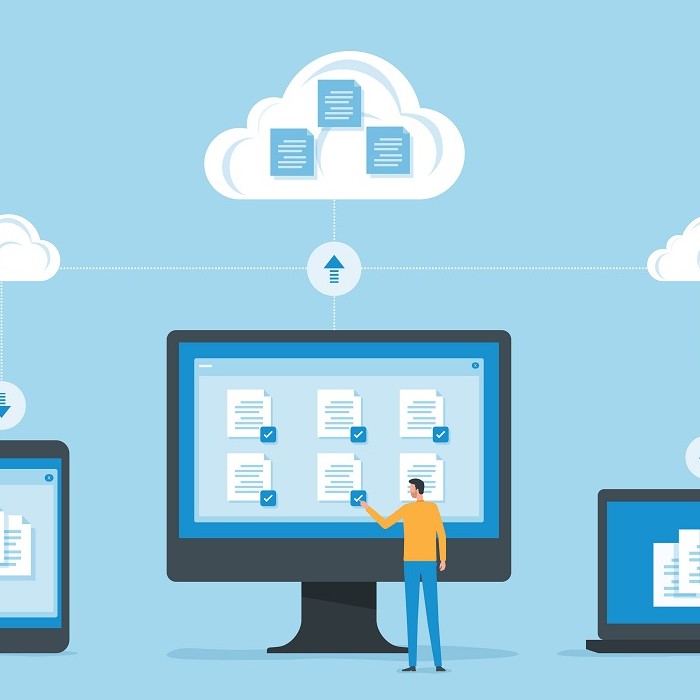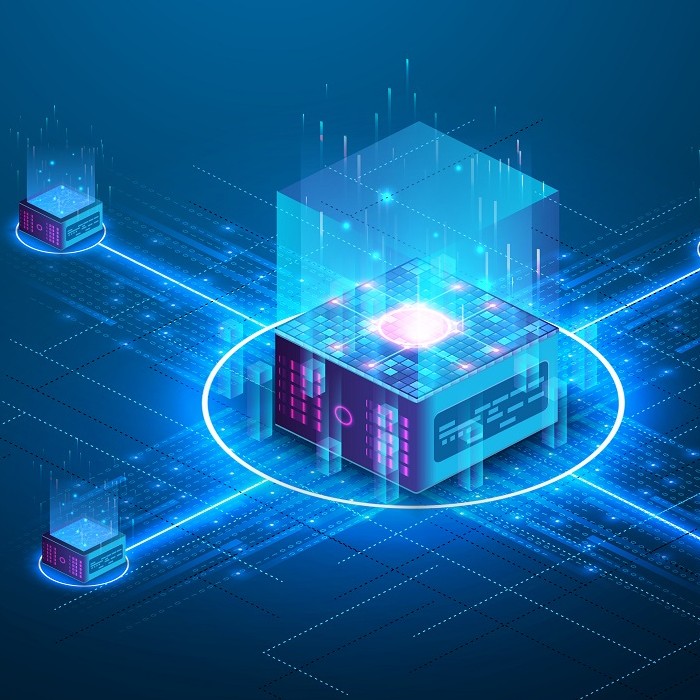As businesses move into what some call the “post-pandemic world,” most firms have accelerated digitization of operations. So much so that a McKinsey report found that the rate of adoption of digital products (which, to a large extent, is proportionate to the rate of application development) has accelerated by seven years the globally.
The research further suggests executives are looking beyond cost efficiencies in technology to realize the value of experimentation and speed of innovation. “Digital adoption has taken a quantum leap at both the organizational and industry levels,” it concludes.
At the core of this adoption is software and application development. A study by Gartner predicted that the focus on core applications will continue unabated; the “enterprise software” category is projected to lead IT spending growth worldwide in 2022 with a rise of 10.6%.
Also rising in parallel is cloud adoption. In line with the shift to remote and hybrid work, IT architectures in the enterprise are going increasingly hybrid. This enables companies to be more agile and move their workloads to and from the cloud as their requirements, circumstances and strategies change.
“In today's digital-first world, business outcomes and innovation are increasingly tied to the ability to develop and use innovative technologies and services anywhere, as quickly as possible. Cloud is the foundation for meeting this need,” said Rick Villars, Group VP, Worldwide Research at IDC.
The cloud has definitely changed the organizational approach to app development for the better. Today, organizations are increasingly turning to hybrid technologies to deliver more features quickly (and more efficiently) to their users while speeding up the app development life cycle.
“Emerging technologies such as containerization, virtualization and edge computing are becoming more mainstream and driving additional cloud spending," said Sid Nag, Research VP at Gartner.
No surprise, then, that cloud-native app development in a hybrid multicloud infrastructure is emerging as the preferred choice for IT leaders and architects due to its flexibility and scalability.
Cloud native components
A lot of considerations influence the decision of which infrastructure to use for testing and deploying an app.
Infrastructure Needs – From Prototyping to Production
Developers need infrastructure that lets them prototype, test, stage and deploy their applications on the same platforms and environments. If the prototype, testing and production environments aren’t the same, there will most definitely be unplanned consequences, leading to ballooning costs and security vulnerabilities.
“When engaging in complex enterprise-grade projects, a balanced approach to both business prototyping and the ability to deploy those projects, securely and at scale, is critical,” said Satyam Vaghani, former senior vice president and general manager of IoT and AI for Nutanix told The Forecast for an article titled One App Development and Deployment Environment to Rule Them All.
“Too often, businesses tend to get caught up in focusing on the early phase of prototyping new technology projects instead of how they will get deployed in environments in which they will operate. This leads only to trouble.”
Vaghani believes it should be easy and delightful for a developer to create a first prototype and see it work as expected in the real world. “At the same time, it should be the same platform that will let them deploy at scale, in a secure manner,” he added.
This becomes possible only when the business goals for the application are clarified up front. When the organization is clear about what it wants (and what all it wants) the workload or the application to do, developers and architects can correctly determine whether the infrastructure they’re considering can match performance requirements and standards of availability, reliability, scalability, number of concurrent users, response times, and so on.
Application requirements that depend on the underlying infrastructure might be very specific, such as
- It needs to process large amounts of data at speed
- It is based on an ML model
- It on an IoT device (or a set of interconnected IoT devices)
- It is vertical-specific (such as fintech or healthcare)
- It needs to be hosted in a particular geographic region to comply with data requirements (thereby limiting the choice of cloud, data center or MSP)
- It needs to sit next to a specific data source (due to data gravity, latency or compliance considerations)
All these factors make the selection of the cloud or on-prem environment more complex. In such cases, a unified hybrid, multicloud infrastructure is more often than not the right answer. The hybrid cloud speeds up and simplifies provisioning, integrates self-service into app development, enables unified platform and resource management, and provides data protection and disaster recovery capabilities to applications – all essential features for implementing agile software development and DevOps best practices.
Hybrid Cloud for Modern App Development
There’s a notable increase in the use of mixed infrastructure, which spans private IT infrastructure (both on-premises and hosted), public clouds, and edge locations, according to the 2023 Enterprise Cloud Index (ECI), a Nutanix-sponsored survey of nearly 1,500 global IT decision makers. Respondents indicated that the increased diversity is driving them to seek a unified place to manage and secure their applications and data.
The majority (60%) of IT teams leverage more than one IT infrastructure, whether it is a mix of private and public clouds, multiple public clouds, or an on-premises datacenter along with a hosted datacenter. That number is expected to grow to nearly three quarters (74%) in the near future. However, mixed infrastructures create new management challenges, and 94% of respondents say they'd benefit from having a single, unified place to manage applications and data across their diverse environments.
As more IT operations move to hybrid multicloud operations, the inherent scalability and flexibility these systems bring can help eliminate many burdens developers face when working with traditional IT systems. Here are a few examples:
- If the development and production environment were different in a traditional IT systems, a hybrid multicloud infrastructure can help “containerize” services one by one, so that these different environments become predictable over time.
- Teams that currently have a slow and error-prone manual release process can adopt a simple CI/CD pipeline for containers, allowing for automated testing and deployment.
- Many organizations have disparate systems that don’t talk to each other and make it difficult to apply a single policy consistently over different environments. A unified hybrid cloud offers “single pane of glass” management, enabling applications to use and take advantage of Config as Code (CaC), dynamic service discovery, and service-level telemetry.
- If legacy applications caused business disruptions all the time, hybrid cloud can enable API-centric development, which improves adaptability, agility, interoperability and resilience of the application.
- Another major issue while developing or modernizing enterprise applications is network and storage latency. For example, performance requirements might stipulate that services and apps must be within 1 millisecond of the database. In such cases, a hybrid infrastructure gives development teams the flexibility to deploy apps within the same network or clusters as the services and data they access. This way, the workload can also adhere to security and privacy policies that require the use of on-prem hardware.
- The cloud makes creating, managing and scaling data stores simple. This holds true whether applications need to access structured or unstructured data, or whether the data is relational or non-relational. Further, licensing costs drop significantly.
- Finally, all applications – whether under development, testing or production – fall under the same security umbrella. Even if they run on disparate environments or access data from different platforms, the same policies are centrally applied. This ensures there is no weak link or vulnerability that can be exploited at any time during the app’s life cycle.
Notwithstanding all these capabilities and complexities, the fact remains many application developers aren’t interested in the nuances of the underlying cloud or on-prem infrastructure. They want everything to work and scale as needed. In recent years, hyperconverged infrastructure (HCI) has made it easier for IT teams to manage their infrastructure as code, so they can easily replicate and scale up or down systems..
HCI – Highway to the Hybrid Cloud
HCI unifies IT ops and software development by decentralizing the management plane. It also addresses most challenges in modern app development. Primarily, HCI lets developers and architects seamlessly build a separate test environment within the same physical infrastructure as the live production environment. Obviously, both environments have the same resources and capabilities and either can be scaled up or down on demand. Further, production can be replicated to test/dev and vice versa, protecting the former at all times.
Which is why HCI has emerged as the new stepping stone for moving everything to a hybrid, multicloud environment. Its software-defined approach has evolved to meet pretty much every application development, portability and security need.
“The value proposition of hyperconverged infrastructure solutions has evolved to align with the needs of a hybrid cloud world,” said Eric Sheppard, Research VP, Worldwide Enterprise Data Center Infrastructure at IDC.
“Hyperconverged solutions are driving growth because they allow organizations to leverage standardized, software-defined, and highly automated infrastructure that is increasingly the backbone of a seamless multicloud world.”
Dipti Parmar is a marketing consultant and contributing writer to Nutanix. She writes columns on major tech and business publications such as IDG’s CIO.com, CMO.com, Entrepreneur Mag and Inc. Follow her on Twitter @dipTparmar or connect with her on LinkedIn.
© 2023 Nutanix, Inc. All rights reserved. For additional legal information, please go here.






